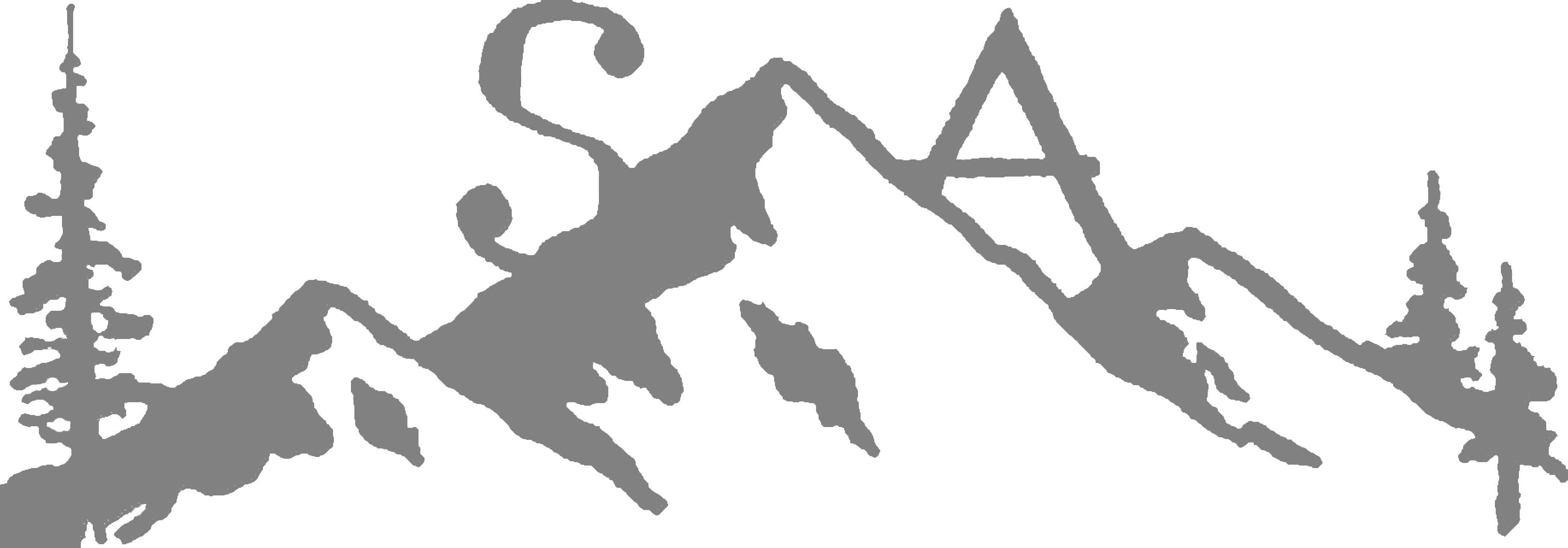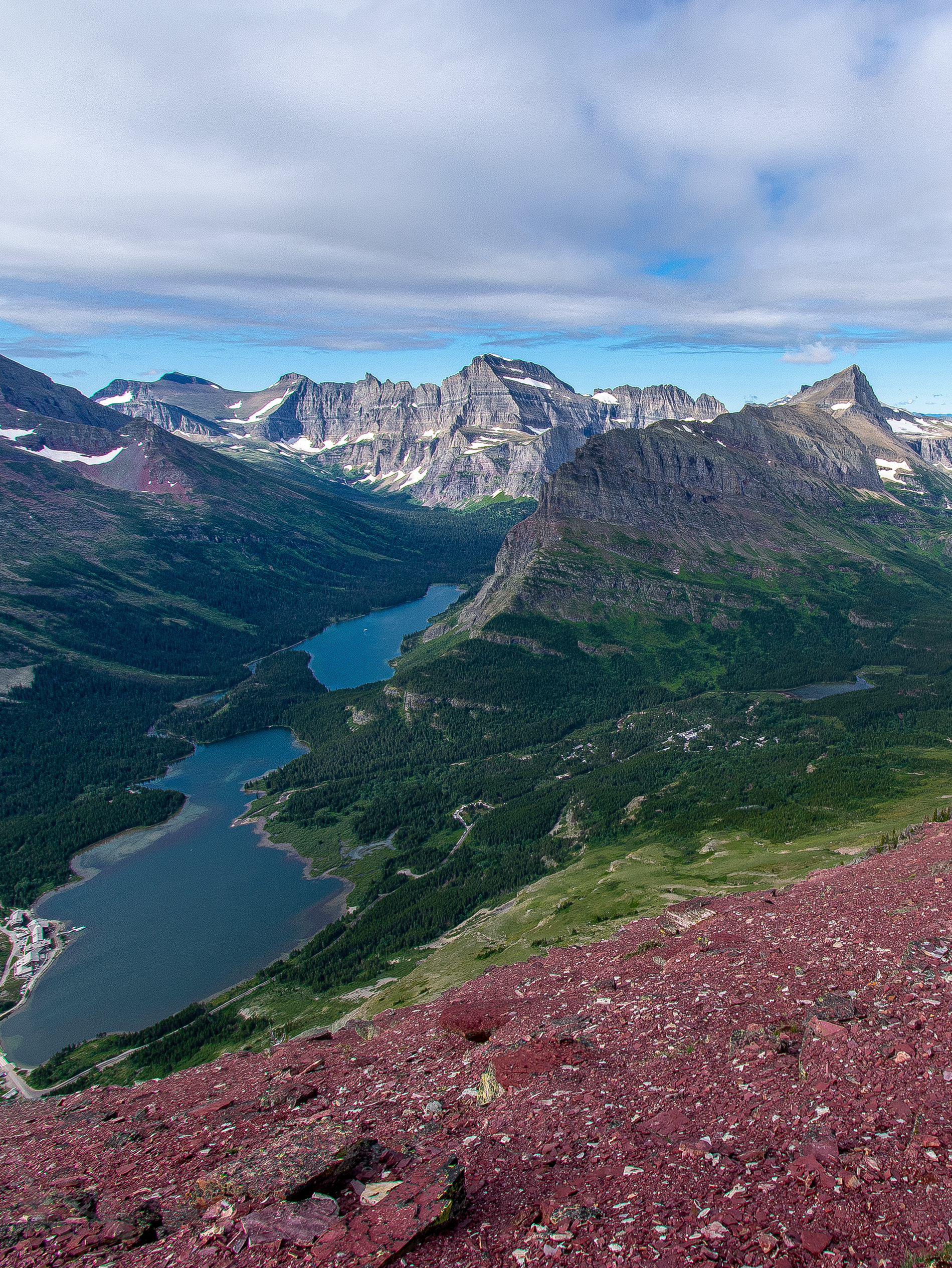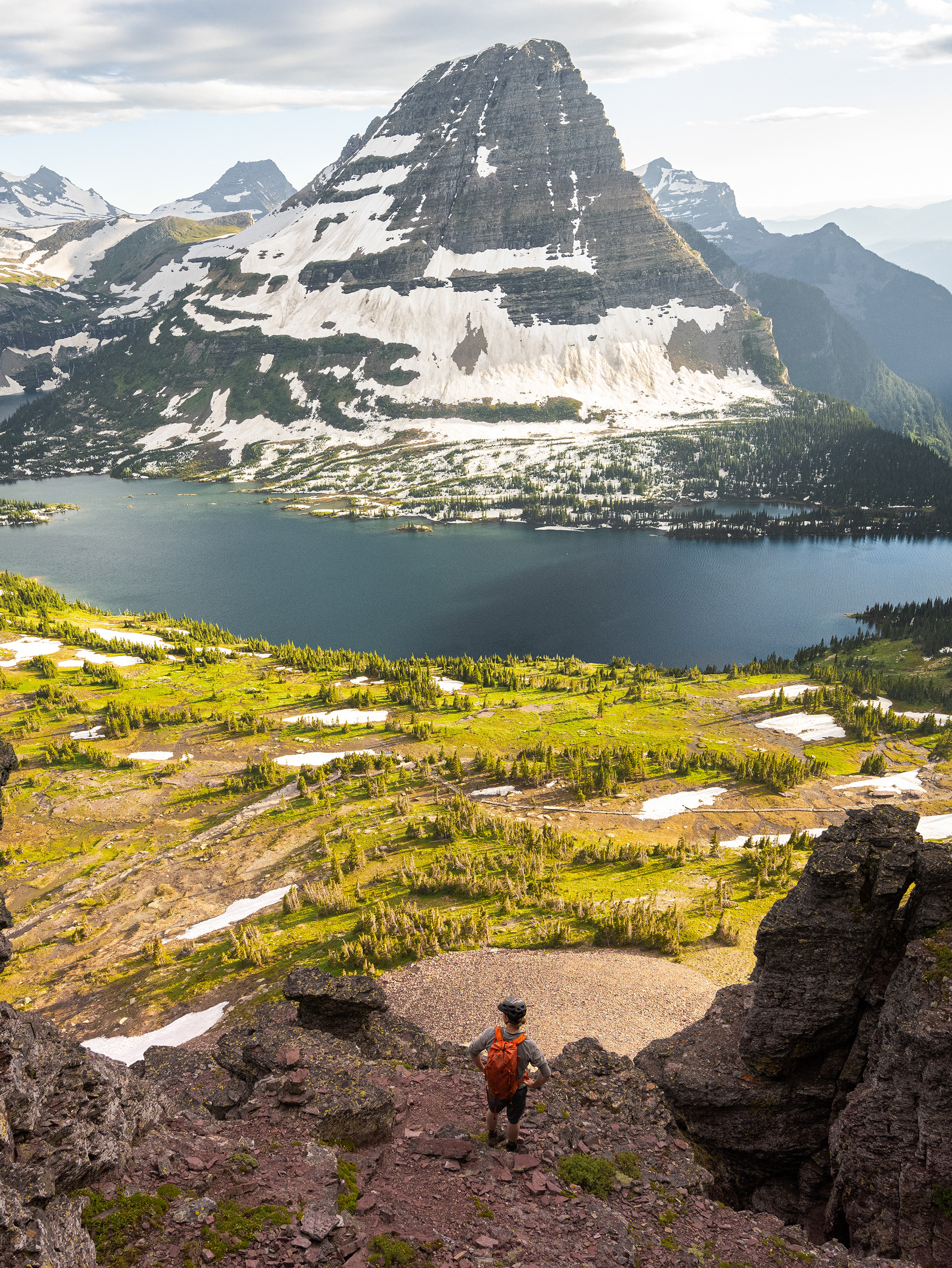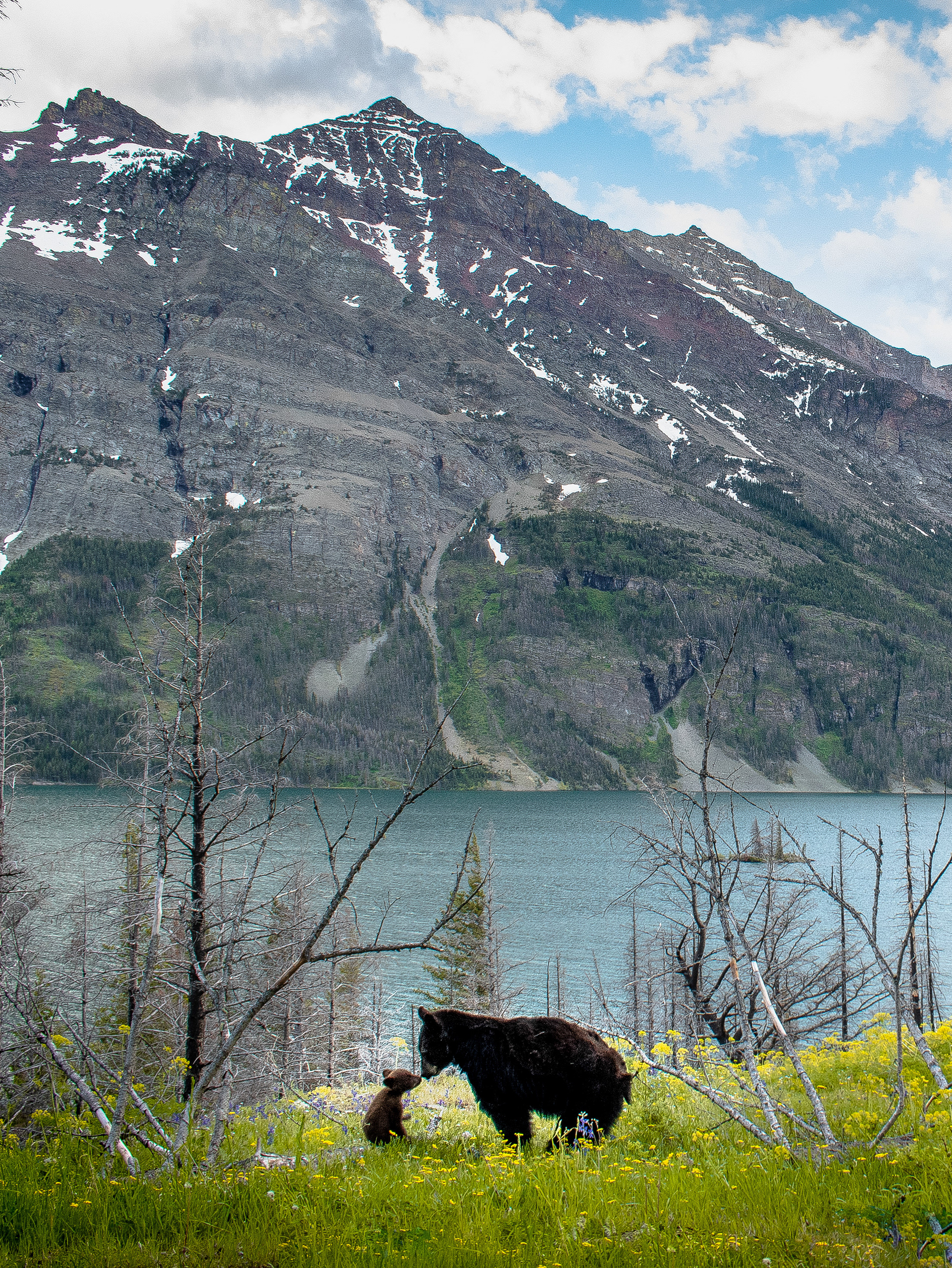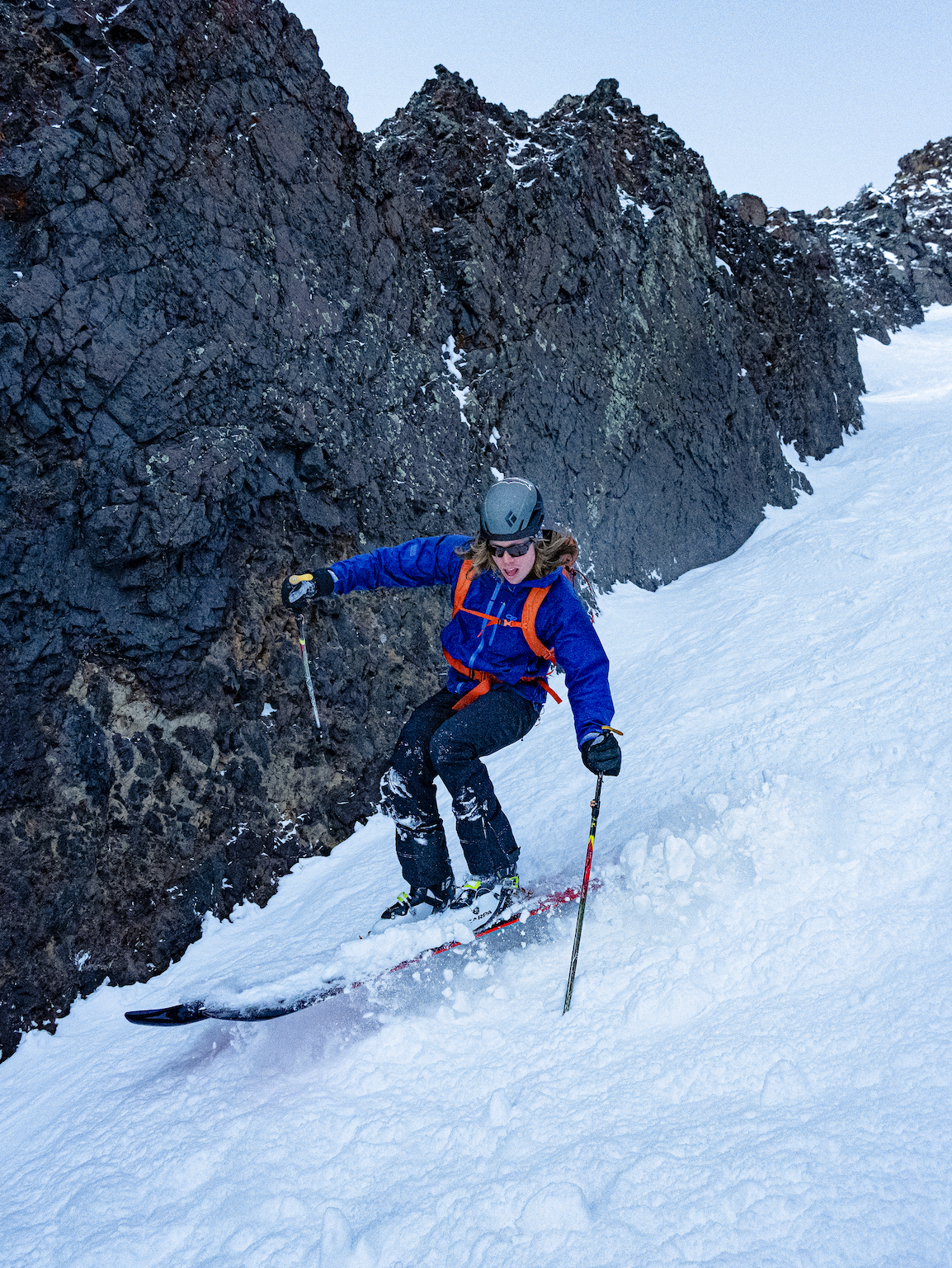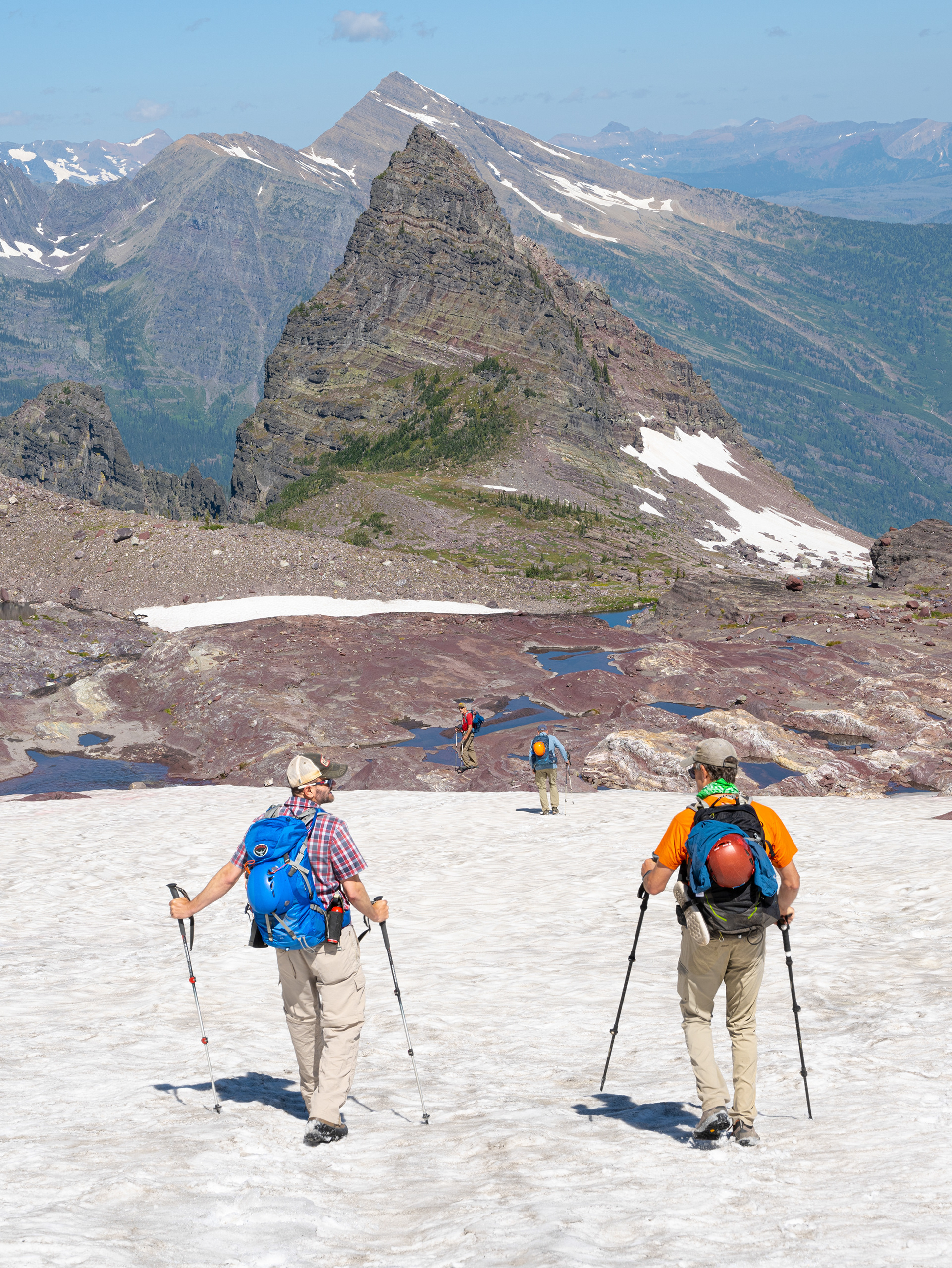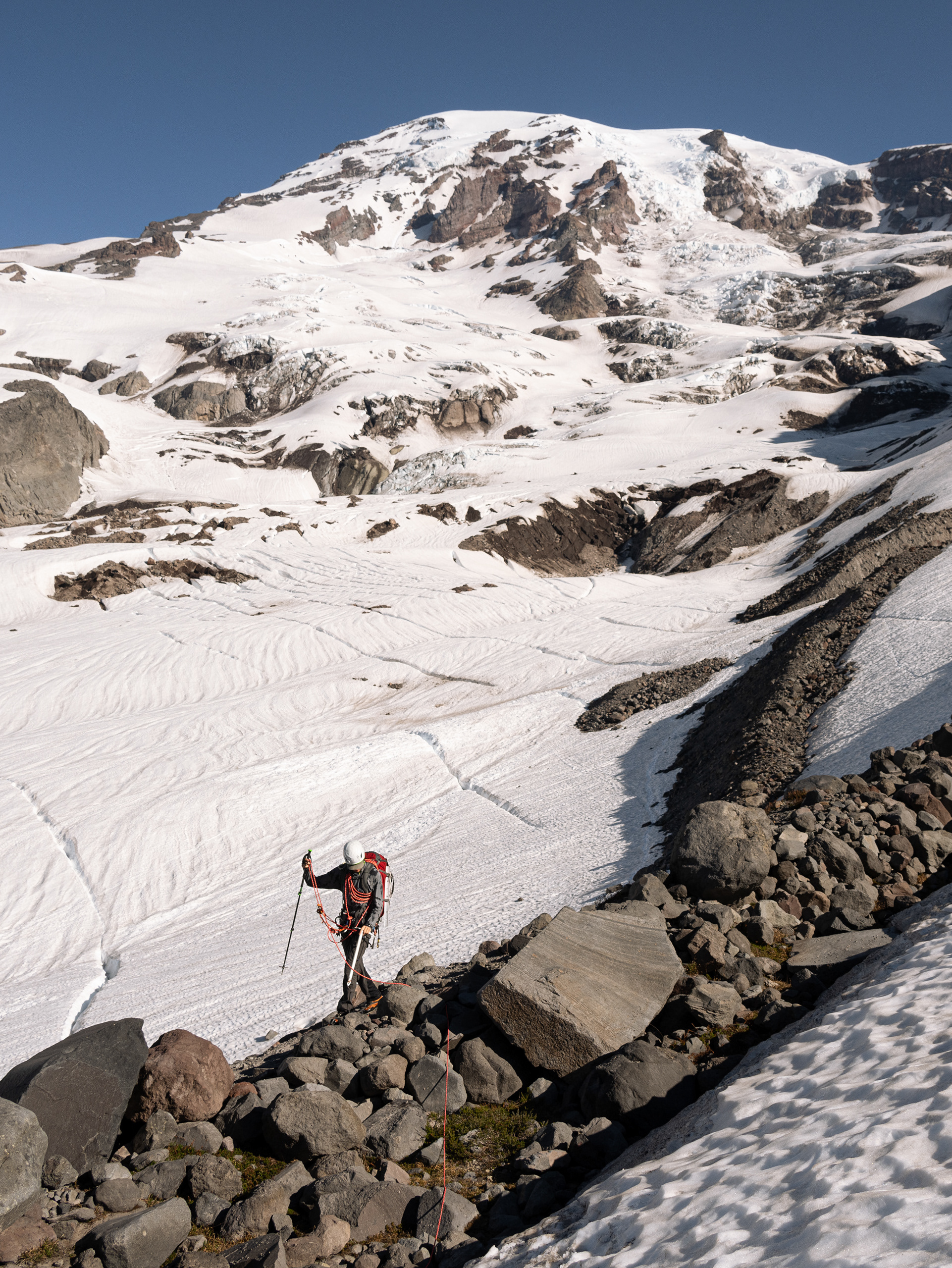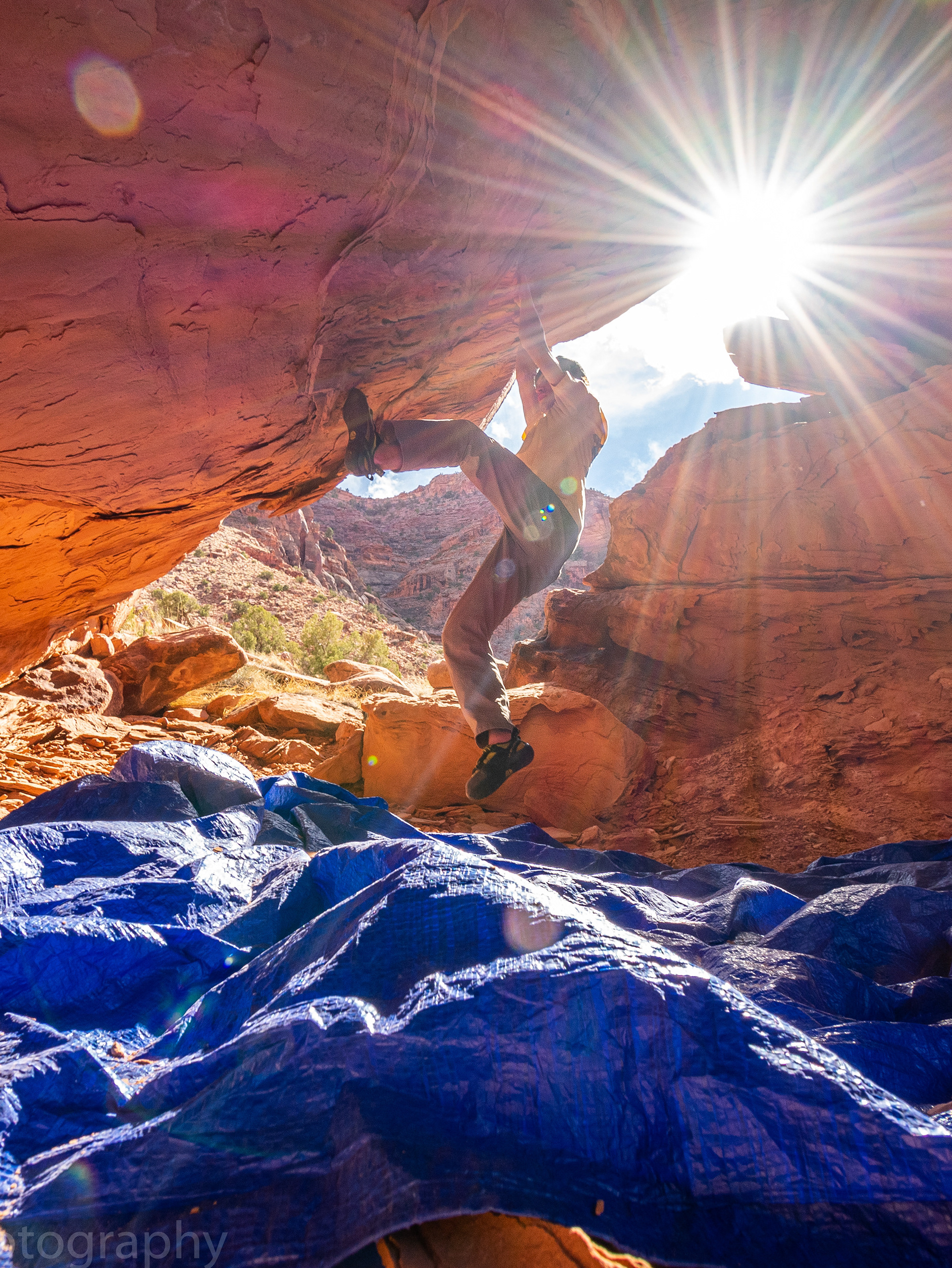April/May 2025 - Nepal Expedition, Kusum Khanguru
It all started last summer when Adam Clark, another local Flathead Valley alpinist, and I were scaling the seldom-climbed North Face of Mount Wilbur in Glacier Park. Clark mentioned he dreamed of traveling to the Himalayan mountains of Nepal again to explore and climb a steeper, more technical mountain called Kusum Khanguru, standing just under twenty-one thousand feet in the Khumbu region, south of Mount Everest. Our fate decided itself here, and we agreed we would train, prep, and travel to Nepal in the spring to attempt the great snowy peak. Fast forward seven months, we were boarding a Boeing 737 en route to the largest mountains in the world. We arrived in Kathmandu, Nepal, with five bulging duffel bags and personal backpacks filled with all the gear needed for a six-week trip in hopes of climbing a new route, alpine style, on Kusum Khanguru’s north side. Working with a local logistics company based in Nepal, Clark had used in previous years while guiding Everest and Ama Dablam, Beyul Adventures provided logistical support and in-country planning to get us to basecamp below Kusum in the Kyashar Glacier Valley of the Khumbu. After a few days of duffel-shuffling our bags, we boarded a bus to reach Manthali, where a short flight would deposit us in Lukla, the starting point for all Khumbu expeditions. It was here we met our Khumbu team, our Sirdar Ang Pasang Sherpa, and porter Jaman, our companions for the next five weeks as we acclimatized on a trek through the Khumbu and eventually into base camp above the town of Monjo. We planned a twelve day trek off the main Everest basecamp route that would take us west of the fray until we reached the Renjo La Pass, where we would continue back down to Monjo, and eventually basecamp in the Kyashar Valley. Excitement bubbled from the team as we sat and ate our first of many meals of Tibetan bread and lemon ginger tea in Lukla.
Mountains larger and more jagged than I could have ever imagined dotted the skyline, piercing the blue skies above from their 6,000+ meter perches high above the Khumbu as we began our trek. The acclimatization plan was to travel from village to village, staying in lodges where we could rest and recover after a daily trek higher and higher, building a base to attempt the daunting Kusum that would be the highest elevation I’d ever tried to attain, just shy of 6,500 meters. We would travel four to five hours everyday with light bags as our porter team would do the heavy lifting and support us in hopes of being in the best possible position to attempt Kusum Khan. From Lukla we traveled to Phakding, a quaint village above the Dudh Koshi river, before reaching the famous Namche Bazaar the next day. We weaved up Namche hill across countless switchbacks to reach one of the largest towns in the Khumbu. The views from Namche were breathtaking as we peered into great valleys harboring majestic peaks of rock, ice, and snow. From Namche, we broke off from the main Everest BC trek and traveled to a much quieter region where we would stay in Thame, Lungdhen and eventually up and over the famous Renjo La Pass. We enjoyed the quiet days trekking through wide valleys where it seemed that Yaks outnumbered people. We moved consistently from one destination to the next but still made time to enjoy the incredible monasteries and viewpoints throughout the trek. Staring up at the Renjo La Pass, we couldn’t believe how well the trail was constructed as we moved higher and higher up the perfect rock steps to reach the pass at 17,585’. The views were immaculate and we stared right at Everest, Lhotse, and Makalu, three of the tallest mountains in the world. We sat and marveled at the stunning peaks in every direction before descending past Gokyo Lake and eventually reaching the town of Gokyo, nestled below Cho Oyu, another 8,000-meter Peak. We continued after exploring the Ngozumba Glacier, working back down valley through the quiet villages of Macchermo and Mong La back down to Namche. It was here in Namche that we assembled our porter team and made final preparations to head to base camp from the lower village of Monjo the next day.
With our seven-man porter team acquired to carry our camp and climbing gear into base camp, we departed the riverside Monjo village up into the Kyashar Glacier Valley, where no Westerners had basecamped out of in ten-plus years. We worked up and through thick bamboo and rhododendron forests higher and higher, weaving across the steep and cliffy hillsides until Kusum and its neighboring peaks, Thamserku, Kangtega, and Kyashar, came into view. After dispatching the nearly 5,000 feet of gain into the valley we were situated on a flat spot below the glacier that we would call home for the next fifteen days. All the anticipation and effort spent acclimatizing put us in a great position to attempt to summit Kusum, but as always, you are at the mercy of the wild out there, and the perfect weather we enjoyed throughout the trek now drastically began changing as we took a recon hike to view the potential route lines. Snow and consistent precipitation covered the peaks in a fresh blanket of snow that would continue throughout the entire time in base camp, making conditions even more challenging. Yet we continued with the plan and cached gear below the start of the northwest ridge, prepping ourselves for an attempt to scale the thought-to-be glaciated and icy aspect of the peak. With heavy bags in tote for a five-day attempt on the peak, we worked through thick snow and scratchy rock slabs, belaying multiple pitches through steeper sections to set up a camp just below 18,000’. The altitude and hard effort had me worked as we sat and brewed at camp, completely depleted, I felt my energy levels scraping the bottom of the barrel, thankfully a filling freeze-dried mountain meal brought me back to life as we watched the sunset from one of the most spectacular bivy sights I’d ever enjoyed. Awaking and immediately roping up, we worked up to the col. through another pitch of tools and crampons, scratching against compact rock. From the ridgecrest, we worked our way through steep blocks to get our first view of what we hoped would be a glaciated and icy face up past a menacing serac. Reaching 18,000’, it was apparent our potential line was completely out, the glacier and ice that blanketed the ridge we spotted from old photos was completely absent, leaving more unprotectable compact rock in its place. The only hope was a line directly below the most dangerous part of the serac, and after pondering our options, we decided to bail as the amount of risk needed to attempt the desperate route was more than we could accept. This ended our first attempt on Kusum as we rappelled back down to camp and replenished ourselves as the snow continued to fall against the yellow walls of our tent. After a few days of scouting, rest, and reloading our bags we headed for the mountains' other jutting ridgeline, the northeast ridge. Again we loaded for five days of climbing and humped the big packs across the Kyashar Glacier Valley in hopes of overcoming the difficult conditions we faced. We worked up a loose snow-covered boulder field and grunted up thousands of feet of steep terrain to work up a glacial moraine that would bring us to the col. between Kyashar and Kusum’s east ridge. Avalanches, icefall, and a constant bombardment of rockfall from Kyashar, along with our intended ascent route being void of the Glacier and ice discussed by parties previously, halted our efforts as we sat and pondered our options. The staggering amount of glacial and ice recession on the face brought a somber cloud over the team as we knew the conditions were far out of our control, and there was nothing we could do about it. As we sat high above the cloud layer near 16,000’, we felt the dream of summiting Kusum slipping from between our fingers, and by something out of our control. A long discussion prompted a decision to bail that was incredibly difficult to accept, yet one look at the beautiful glacier basin we sat in healed all the dejection we felt. Weaving back down the mountainside and into the clouds and snow was a difficult pill to swallow yet just being in this magnificent place and putting ourselves in the best position possible over in Nepal reminded us that its the entire adventure, not standing on the summit that we crave, as we are small beings in a much bigger world than ourselves. The perspective gained from these attempts only solidified our team and inspired us to continue on the path we have chosen, chasing these larger-than-life dreams that bring us closer to ourselves and the great wilderness we chase.
Reaching basecamp, our team was happy to have us home and prepared huge portions of Nepali food and celebrated our safe arrival. To us, it's all about coming home safe, coming home friends, and sharing a grand adventure together in the most beautiful mountains in the world, all of which we achieved, and we couldn’t have been happier. We don’t view this as a trip as a failure in any sort of sense, we will learn, come back stronger and more prepared in the future, chasing these grand dreams that keep us moving forward.
